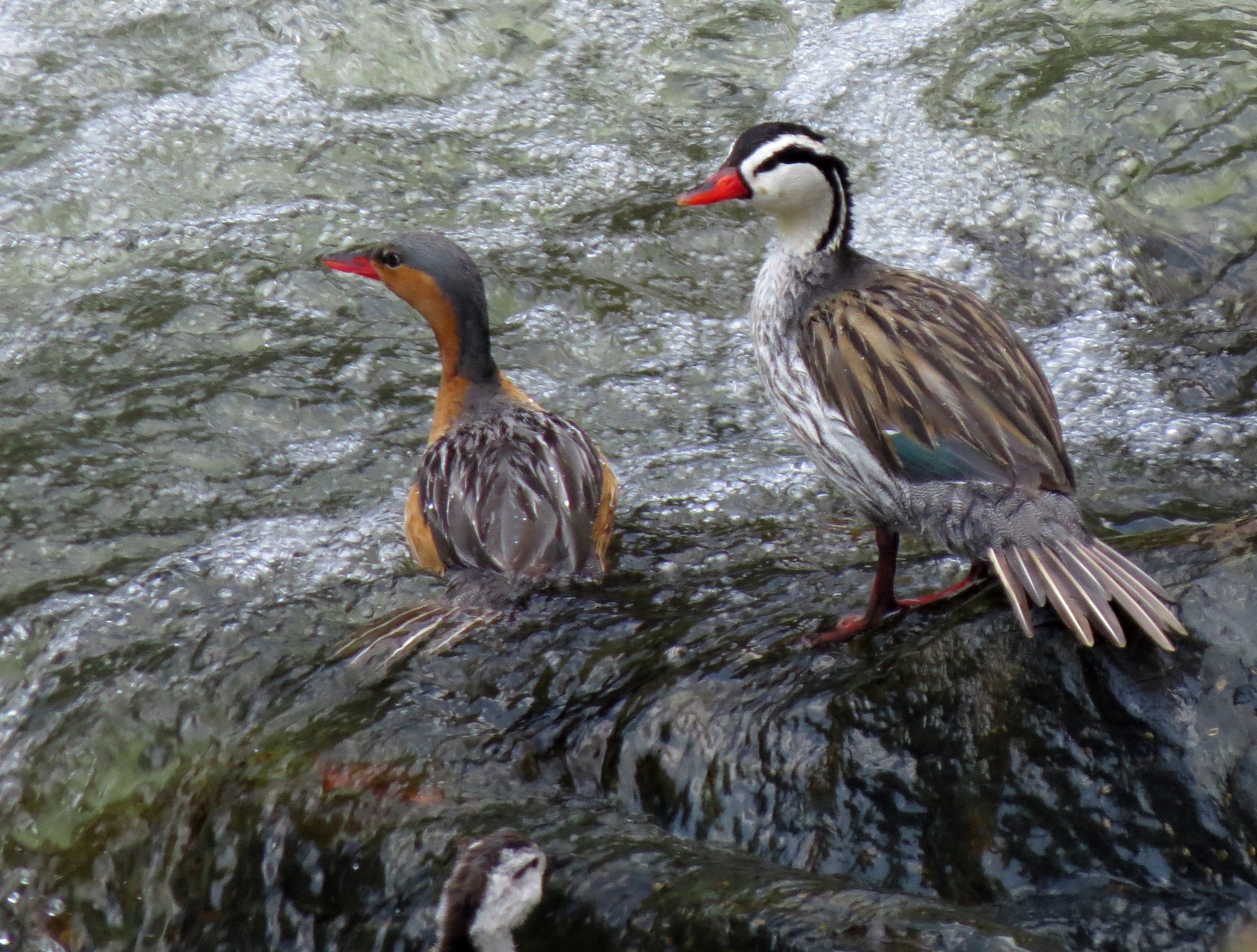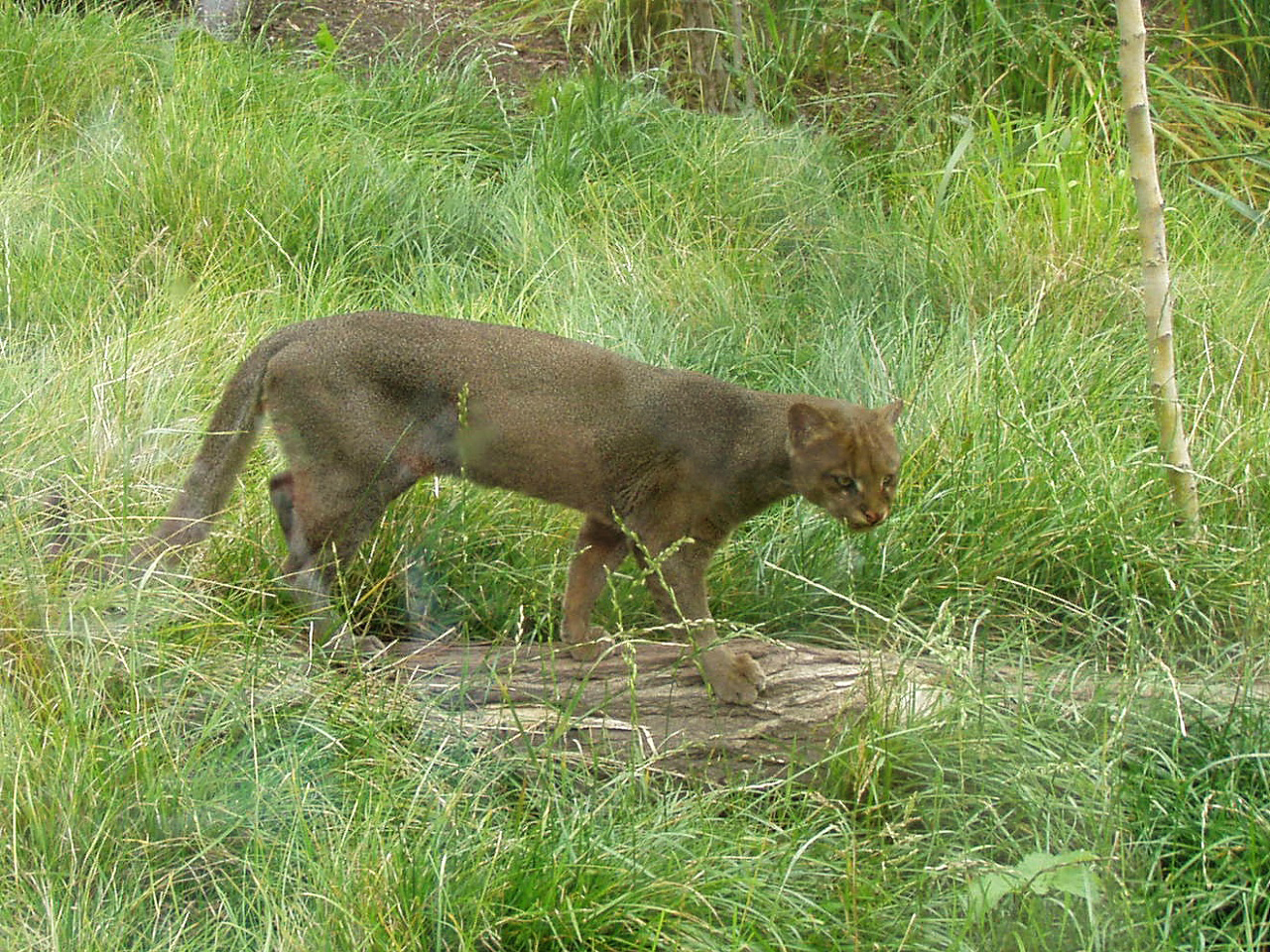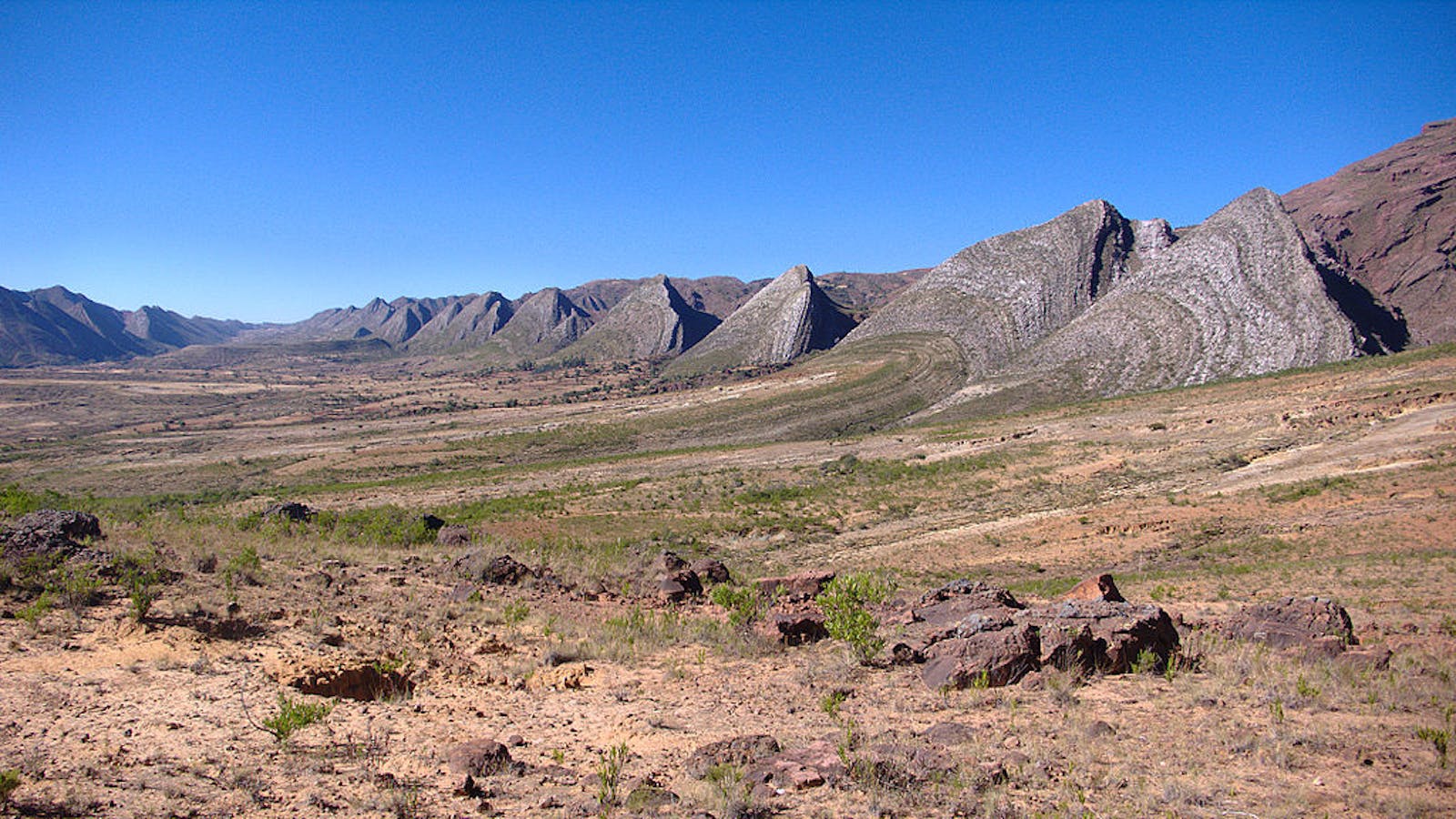Bolivian Montane Dry Forests
The ecoregion’s land area is provided in units of 1,000 hectares. The conservation target is the Global Safety Net (GSN1) area for the given ecoregion. The protection level indicates the percentage of the GSN goal that is currently protected on a scale of 0-10. N/A means data is not available at this time.
Bioregion: Andean Mountain Forests & Valleys (NT11)
Realm: Southern America
Ecoregion Size (1000 ha):
7,317
Ecoregion ID:
523
Conservation Target:
25%
Protection Level:
6
States: Bolivia
As its name suggests, the torrent duck is a white-water river specialist that inhabits the flanks of the Andean mountains in the Bolivian Montane Dry forest ecoregion. Males have striking plumage with a black and white striped head and neck, and a red bill. These unique species can be seen resting on rocks among the foaming white water of rivers descending this montane dry forest. However, the river systems in this ecoregion have changed and species like introduced trout have reduced the food available to torrent ducks. The torrent ducks are good indicators of water quality and aquatic habitat integrity.

The flagship species of the Bolivian Montane Dry Forests ecoregion is the torrent duck. Image credit: Creative Commons
The Bolivian Montane Dry Forests ecoregion is restricted to south-central Bolivia, flanking the eastern Andes, and barely reaching northwest Argentina. The forests exhibit diverse microclimates and are tightly interlaced with Southern Andean Yungas to the east and Puna to the west. The northern, southern, western and eastern boundaries of this ecoregion terminate at approximately 160 o and 230 o south latitudes and 690 o and 630 o west longitudes, respectively, while the altitude ranges from 360–700 m. This ecoregion essentially forms a xeric habitat that functions as a transition zone between the mesic Yungas and Puna, and is characterized by steep hillsides, cliffs, and valleys.
Although the ecoregion has been largely altered by human, the original spiny forest and dense chaparral thickets contained species such as Vachellia caven and Hopseed bush, with some regions including hardwood tree species such as Quebracho blanco and Q. colorado. A variety of endemic birds are present in this region, including Bolivian recurvebill, Bolivian blackbird, and a number of finches including citron-headed yellow finch, Bolivian warbling-finch, and Cochabamba mountain-finch.
Other rare and endemic species include the Torrent Duck, Wedge-tailed Hillstar, Black-hooded Sunbeam, and Carbonated Flower-piercer. Many strongly tropical species reach their southern limits of geographic distribution in this region. Additionally, the diversity of felids is apparently high in this region, with potential species including puma, ocelot, pampas cat, Geoffroy’s cat, and jaguarundi.

Puma. Image credit: Creative Commons
This is an ecoregion that has been fundamentally altered by human in recent history. The extent of deforestation in this region has not been documented with certainty, but there are apparently large areas of degraded land throughout its range. There are a number of national parks and protected areas in this ecoregion, including Tariquía National Reserve, the slightly smaller Cama Valley Biological Reserve, and Torotoro National Park. However, these three sites combined do not exceed 6,000 km2, and more reserves within this ecoregion would be ideal in order to prevent further land degradation and fragmentation.
As humans continue to colonize this area, this ecoregion is increasingly heavily impacted by urban sprawl and the ramifications of an increasing human population, such as overhunting, land conversion to agriculture, and collection of fuelwood. For this reason, fragmentation of the remaining forests is the dominant threat facing the Bolivian Montane Dry Forests. Only 6% of the original habitat remains.
The priority conservation actions for the next decade are to: 1) expand protected lands throughout the ecoregion in order to recover habitat and prevent further urban expansion; 2) limit land conversion practices by restoring degraded lands and not cutting remaining forest; and 3) educate local communities to reduce the harvesting of fuelwood.
Citations
1. Brooks, D. 2018. South America: In the mountain valleys of southern central Bolivia. https://www.worldwildlife.org/ecoregions/nt0206. Accessed January 22, 2019.
2. Bernal, N. 2016. Abrocoma boliviensis. The IUCN Red List of Threatened Species 2016: e.T18A22182349. http://dx.doi.org/10.2305/IUCN.UK.2016-2.RLTS.T18A22182349.en
3. Olson, D., E. Dinerstein, P. Hedao, S. Walters, P. Allnutt, C. Loucks, Y. Kura, K. Kassem, A. Webster, and M. Bookbinder. 2000. Terrestrial Ecoregions of the Neotropical Realm (map). D. C:.Conserv. Sci. Program, WWF-US.
4. Ergueta-S. P., y C. de Morales. 1996. Libro Rojo de los Vertebrados de Bolivia. Bolivia, CDC.



